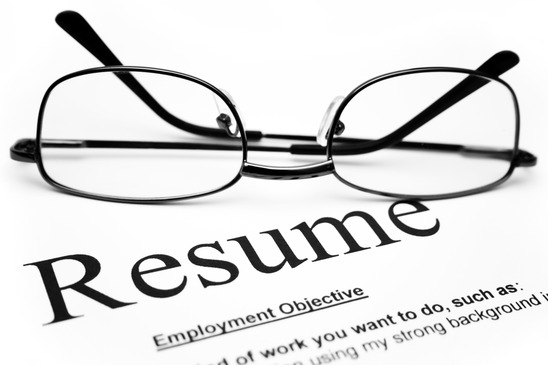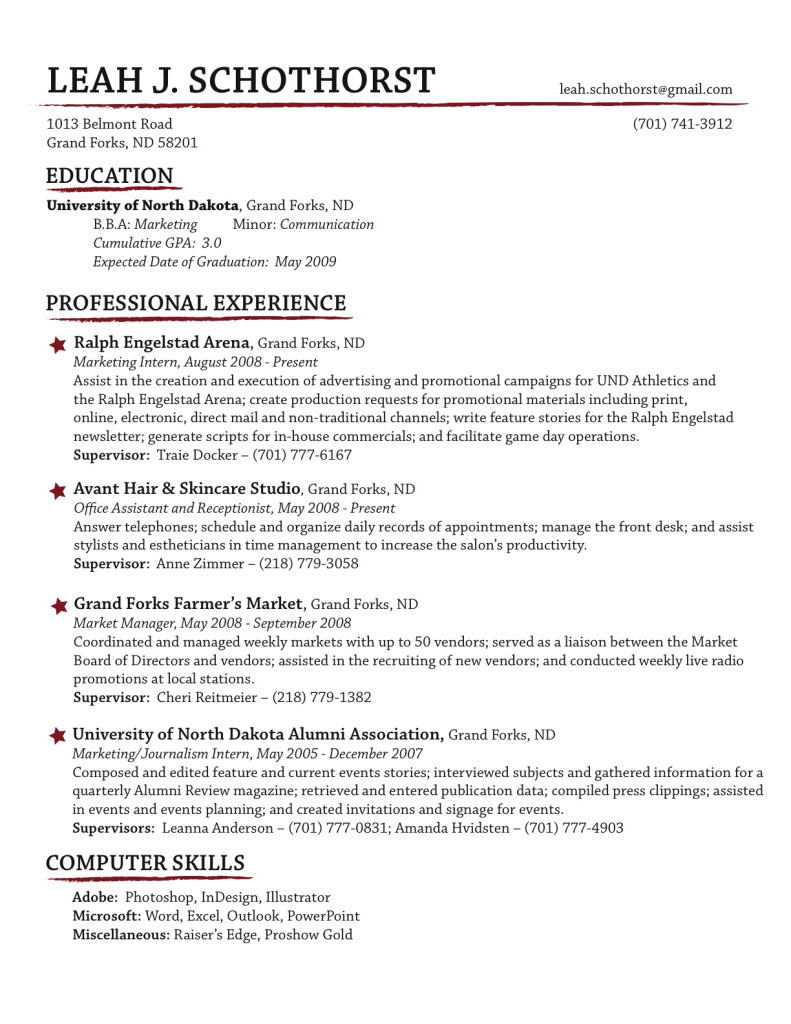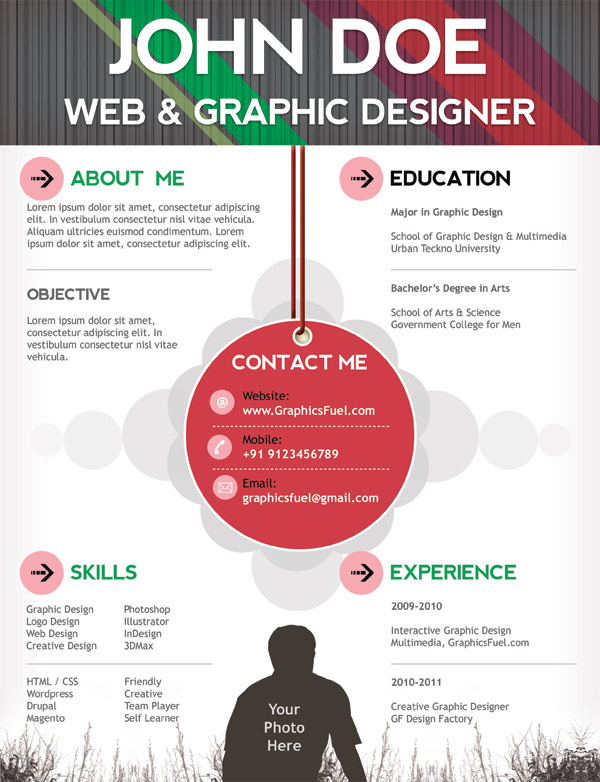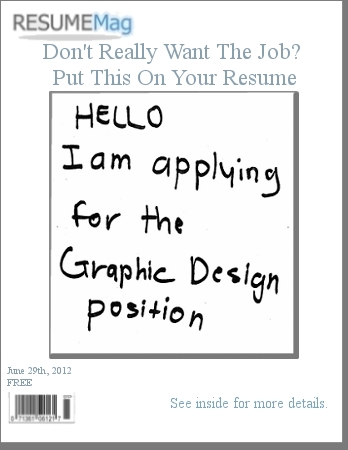
Job Tips: Resume Writing
The goal of your resume is not to get you a job. The goal of your resume is to get you an interview.
Starting with the very first resume I’ve written, to my current resume, I’ve probably had it edited by myself, and others, upwards of 100 times. It’s a document that at best, will always be almost perfect.
Why is that? Because whomever you ask to edit your resume will tell you something slightly different than the person who edited it before them. However, there are tips and tricks that you will hear from everyone. Just Google “resume tips” there’s half a million results. But this list offers the most important tips to land your interview for your dream job.
There are some questions that can really only be answered by your preference. Questions such:
When looking for answers to these three questions, you should keep some tips in mind.
Everything on your resume should be written, formatted and delivered with these tips in mind. I said it earlier, and I’ll say it again: The goal of your resume is not to get you a job. Your resume gets you the interview. Once you meet the interviewer(s) in person, that’s when you can elaborate.
1) Be concise. Remove every word that does not add substance. No remorse. It’s that simple.
- Your resume will be scanned for 60 seconds at most. You need to communicate as much about your rockstar work experience in as few words as possible. This coexists with word choice. Powerful word choice means a less wordy resume. Read a sentence with a word, and then without the word. Does the sentence still work without that word? No? Great. Take it out.
- Additionally: Keep your bullet points to a single line. No longer. (Yes there are exceptions to this.)
2) Show what your work resulted in. What do hiring managers and HR coordinators want to see? Results. What is the bottom-line of your work? What did your work result in?
- What if I can’t show results? If you can’t communicate your results, that is ok. Not all of your responsibilities will have a way to display what it resulted in.
3) Quantify your work. This goes hand-in-hand with displaying results. You should put numbers/titles on any task if applicable. People are obsessed with data. Data makes tasks tangible.
- What sounds better?
- Distribute media pitches to national media outlets resulting in 15 coverage stories.
- OR
- Distribute 20 media pitches resulting in pieces from 15 outlets like The Wall Street Journal and LA Times.
- Distribute media pitches to national media outlets resulting in 15 coverage stories.
- While yes, the first bullet is more concise, the 2nd bullet packs a whole lot more punch. When you’re in the ring, you gotta land your punches.
- Quantifying your work doesn’t always mean using numbers. Listing specific outlets is better than “national media”. You don’t have to say that the New York Times is a national outlet. People already know that.
- Listing that your song promotion resulted in chart placement on Beatport and/or iTunes is better than simply listing that the song charted.
- Writing that your song promotion work led to chart placement on your own blog with six followers doesn’t look very good.
- Don’t sink your own ship and quantify your work to look worse. If you sent out 150 pitches and got one story, that’s doesn’t look great. It’s better to not quantify, than to shoot yourself in the foot. Make your work look as best as it possibly can, without lying.
4) Consistency. This one is pretty simple, but is the essence of detail orientation. Keep everything consistent in your formatting and spelling.
- Does one line have a period at the end? Great. Now the end of all your lines will have periods. Oh, your lines don’t have periods at the end? Perfect. Now all your lines won’t have hard stops (periods.). That’s consistency in a nutshell. Just keep an eye out for all the little details in your document, and keep to that. Bold. Italics. Underlined. Whatever it is, keep your formatting consistent, and triple check your spelling/grammar.
- PS: Don’t use a default font. It makes it appear that you were too lazy to change the font.
5) Make everything sound as awesome as it is/was.
- If two resumes are identical, but one sounds more exciting than the other, the exciting resume will get the interview.
6) Bigger project? Put it at the top.
- Another simple one. Order your bullet points from kick-ass to semi-cool. What’s more important, organizing conference room calendars, or authoring media pitches? Authoring media pitches. Cool, that was simple to decide.
7) All killer, no filler. (To be cliché)
- Clichés exist for a reason. Two meaty bullet points are better than four that hold minimal value. This goes back to being concise. Make it concise and killer. Four minimal-value bullet points is not being concise.
8) Variety. Don’t be a one-trick pony.
- While you 100% want to highlight what you’re best at and display that you’re specialized in an area, you don’t want to appear as a one-trick pony. If all your experience points are highlighting the same skill, then you spent time making a resume that displays that you can do one thing. Don’t spend an entire sheet of paper communicating one ability.
- Maybe you like playing around with InDesign, WordPress, Ableton, social media, etc. Whatever it is, if you can highlight in one or two lines another area of interest and ability, it shows that you’re multifaceted.
9) Only put your GPA if it’s a killer GPA. If you’re second guessing whether you should, or shouldn’t put your GPA on your resume, then you probably shouldn’t. Everything you put on your resume needs to improve your image, not keep it stagnant.
- If your GPA won’t improve your chances of getting an interview, don’t add it. Hiring managers care more about the work you have done, and will do, than how you did in general education classes. (Yes they care about your education, but they care more about what value you add to their company)
10) Keep it to one page.
- Unless you’ve been in the field for 20 years, you should be able to be sum up your experience in one page. As I’ve said before, a resume is looked at for 60 seconds at most. Don’t waste experience and paper by having more than one page
11) Cater your resume to the job description.
- This one is optional. You can still get an interview without catering your resume to a job posting. However, if your experience overlaps with the requirements of the job, you’re going to look that much better to the person reviewing your resume.
12) Don’t have an objective section. It takes up valuable space and your objective section is what your cover letter is for. Its that simple.
- Oh you don’t want to write a cover letter? No one does. But the people who write cover letters are the ones who get the interviews.
13) Have fun with it.
- In essence, resume writing is a creative process. You’re encapsulating all your experience into one page. You’re writing about your work in its best light. The more fun you have with your resume, the more it will standout from the rest.
14) Don’t lie. This needs no elaboration.

Questions to consider when writing a resume:
1) Can I elaborate on this in person?
2) How involved was in in that project?
3) How does this sound to someone who doesn’t know any background?
4) Does this resume align with the job description?
5) Is my formatting 100% consistent?
6) Is all my contact information correct?
7) Do I have my references’ permission to use them as a reference?
8) Am I sure that my formatting is correct? How is my grammar & spelling?
9) Does my resume highlight all of my abilities?
10) How interesting do I sound? (Don’t overthink this. Just don’t have a boring resume)
Extra tip: When connecting with professionals in the field you’re trying to get into, don’t overthink it. Just be polite and down to earth. Half of the job interview process is showing that you’re a culture fit for the company. So be yourself. You’ve been told to be yourself 14,304,130,468 times for a reason.
To post your resume on our site, go to https://edmjobs.com/create-resume-profile/


